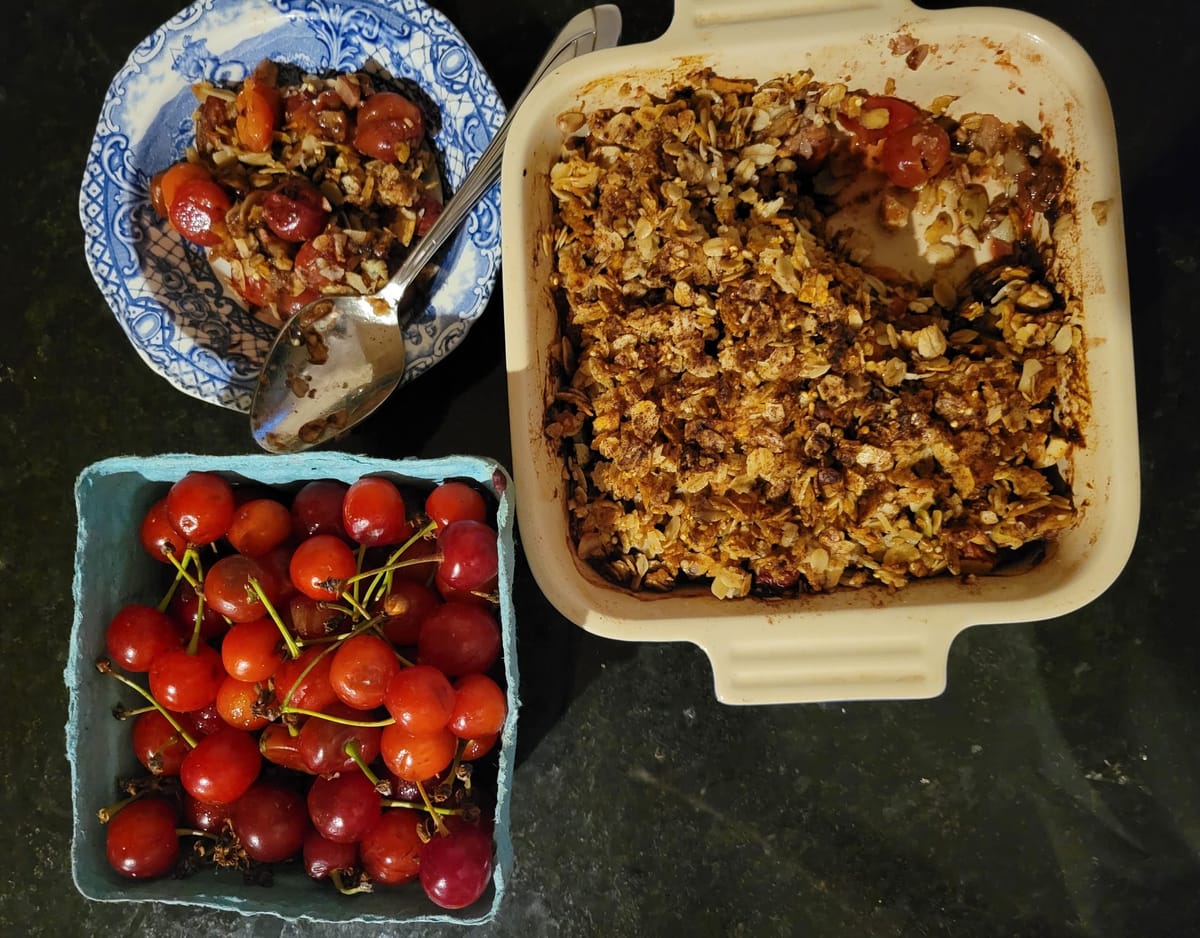Tart cherries, now in season, make for simple baked treats
Locally picked tart cherries, currently available at the Oxford Farmers Market, are perfect in simple baked goods. Try mixing them with almonds and granola for a simple treat.

Locally picked tart cherries (often marketed as sour or pie cherries) are currently appearing at Oxford’s Farmers Market, courtesy of Downing Fruit Farms. Tart cherries are smaller and less firm than sweet cherries, with deep red instead of creamy yellow pulp.
Cherries were first cultivated in Turkey and carried to Europe by birds and to the American colonies by European settlers. What about Japan’s cherry blossom trees? They have ancient roots, far from Turkey.
Apparently, cherry trees can’t produce both attractive blossoms and abundant fruit, so they are bred primarily for one or the other. Perhaps everyone else knows this already.
Michigan is responsible for three quarters of the tart cherries grown in the United States. Traverse City, Michigan, where the annual Cherry Festival is upcoming June 29 to July 6, calls itself the Cherry Capital of the World. Outside of Michigan, large-scale U.S. growers opt for sweet cherries.
Sweet cherries are meant to be eaten without adornment, but tart cherries need to be baked. I tasted some of our local tart cherries straight from the box, and yes, they are very tart.
To bake tart cherries, you first have to remove the pits. Fortunately, tart cherries have much smaller pits and thinner skins than sweet cherries, so pitting tart cherries is not nearly as onerous as might first appear. It took me 15 minutes to pit a pint box, around 110 cherries. To avoid cherry stains on a beloved shirt, I suggest wearing a red Miami University t-shirt.
Given their small size and thin skins, tart cherries are best pitted with fingers. Mechanical devices work better on large thick-skinned sweet cherries.
I held each cherry in my left hand, broke the skin with the right thumb, extracted the pit with right thumb and index finger, transferred the pit to a bowl on my right and the flesh to a bowl on my left. I missed one pit, but no harm done.
I prefer to bake our fresh local summer fruit such as tart cherries with little adornment. A pie often results in too much pastry compared with fruit, so instead I spread a pint box of pitted cherries on the bottom of a 5-inch square baking dish.
Cherries and almonds go well together, so crush a few almonds and add them to the pitted cherries. The almonds add a bit of crunch to the soft cherries. MOON Co-op has organic almonds in the bulk food section.
To keep the cherries from getting too watery during baking, published recipes frequently recommend adding some cornstarch, but I prefer to use a bit of thick locally made jam, such as Johnson Family Farm’s haskap jam.
I mix a combination of rolled oats and granola from MOON Co-op’s bulk food section with 1 tablespoon of softened unsalted butter, spread the mix thinly across the cherries, and sprinkle ground cinnamon on top of it. The 5x5 baking dish needed around 3/4 cup of the mix. Bake at 375 for around 20 minutes, longer if you want the oat topping crunchier.
The best no-bake option for sour cherries is to split in half a Kate Currie scone, toast them, cover with lots of pitted cherries, and top with local creme fraiche from Snowville Creamery.
James Rubenstein, a professor emeritus of geography at Miami University, is president of the Oxford Free Press Board of Directors. He also serves on the Board of Directors for MOON Co-Op.




